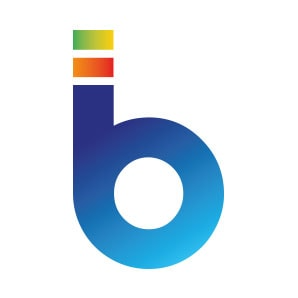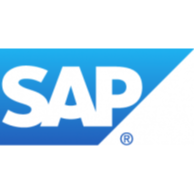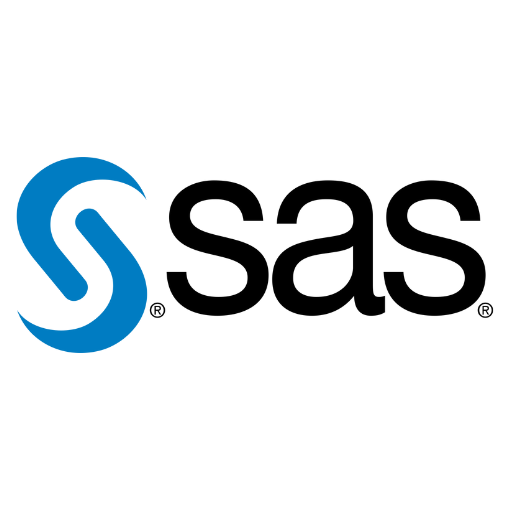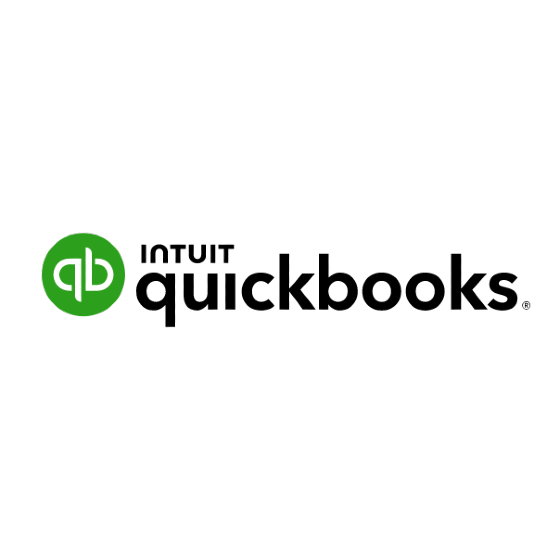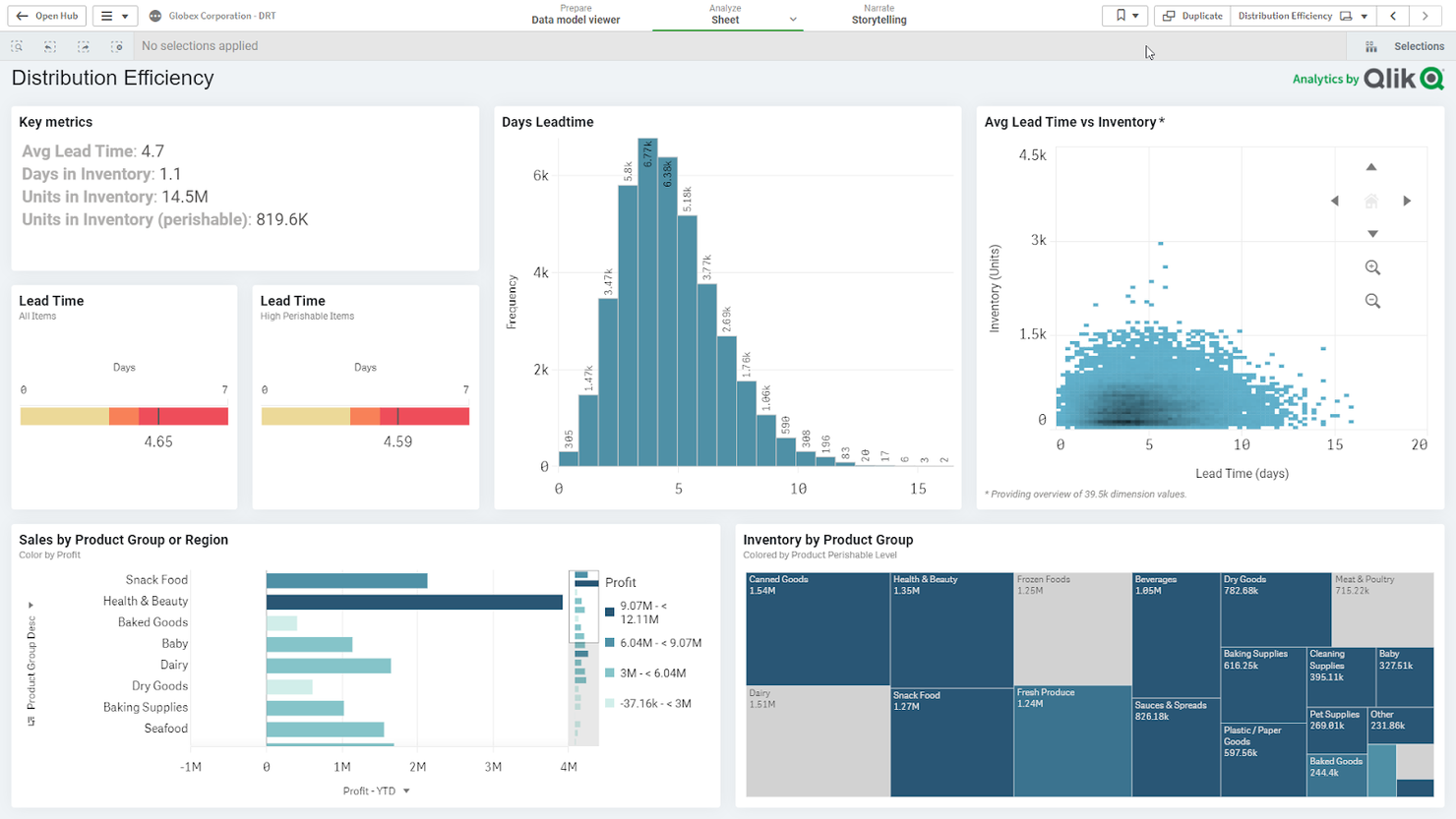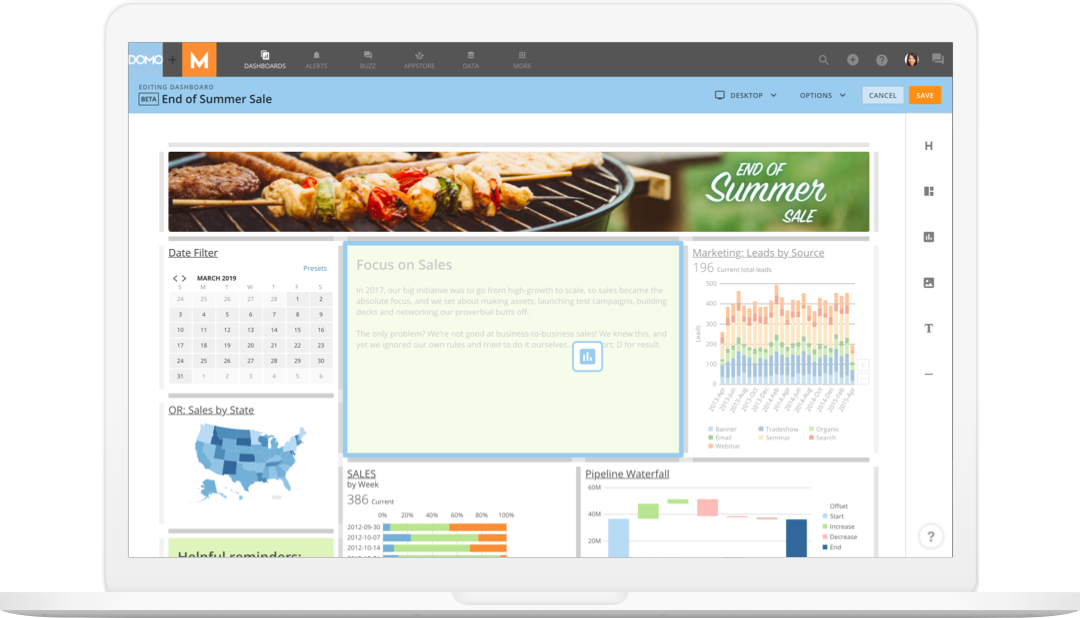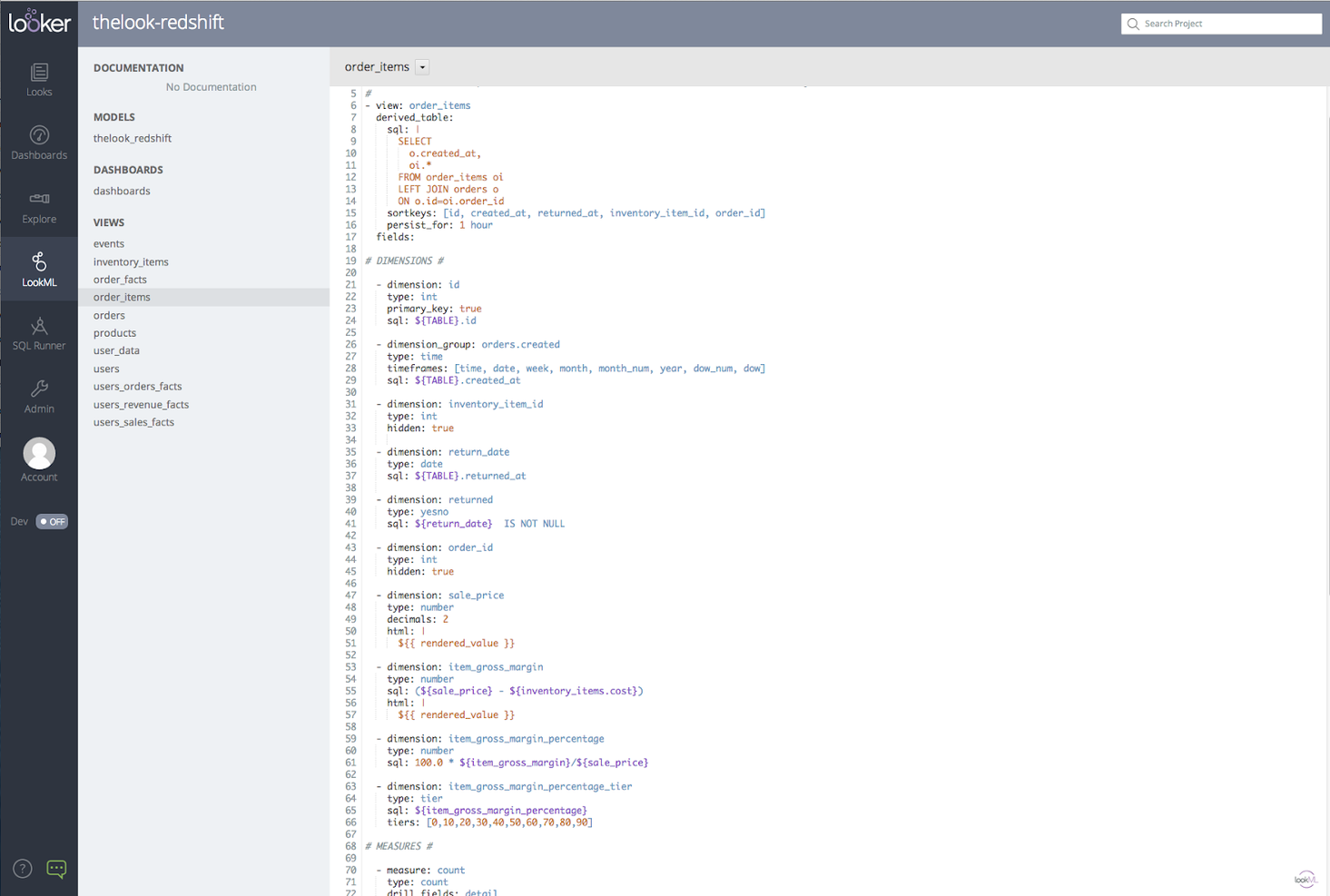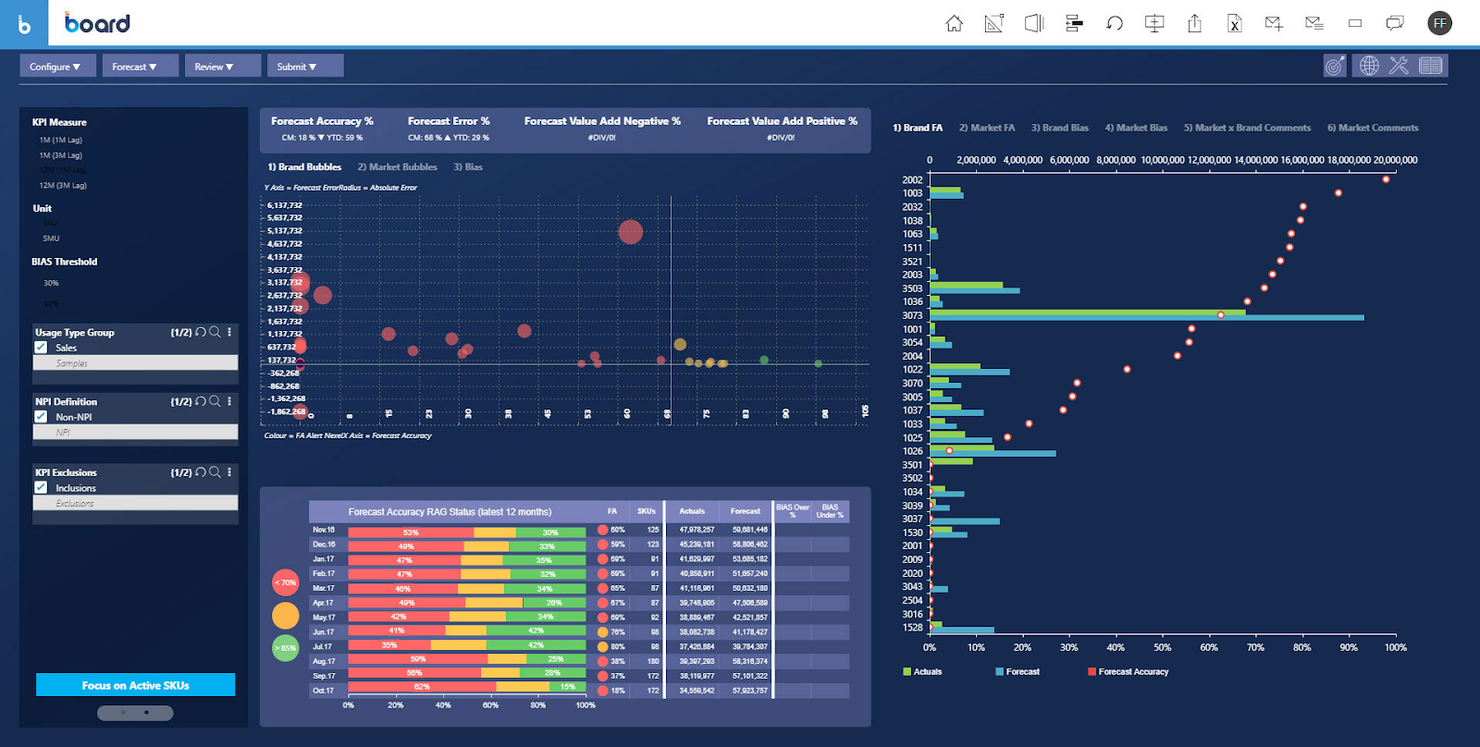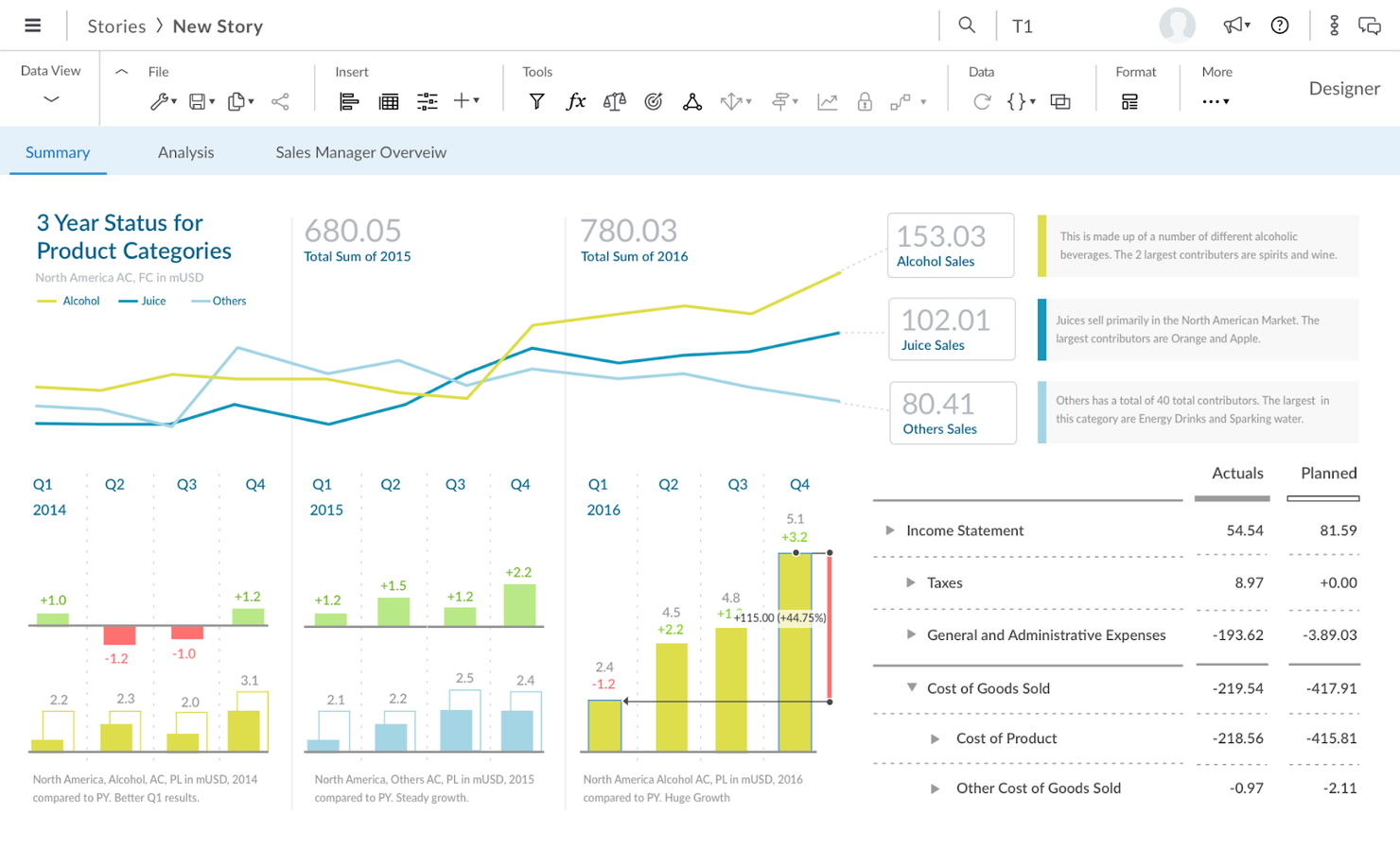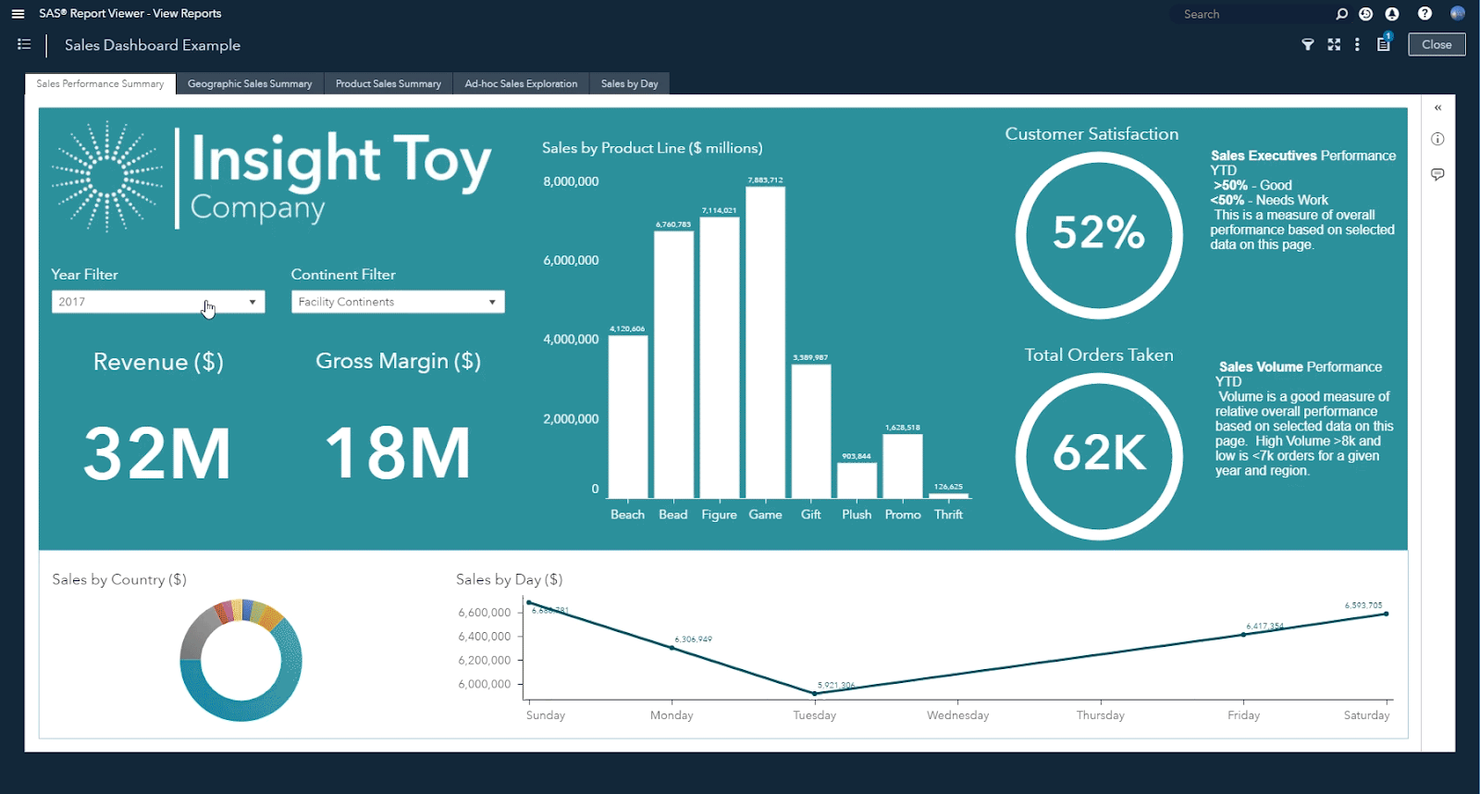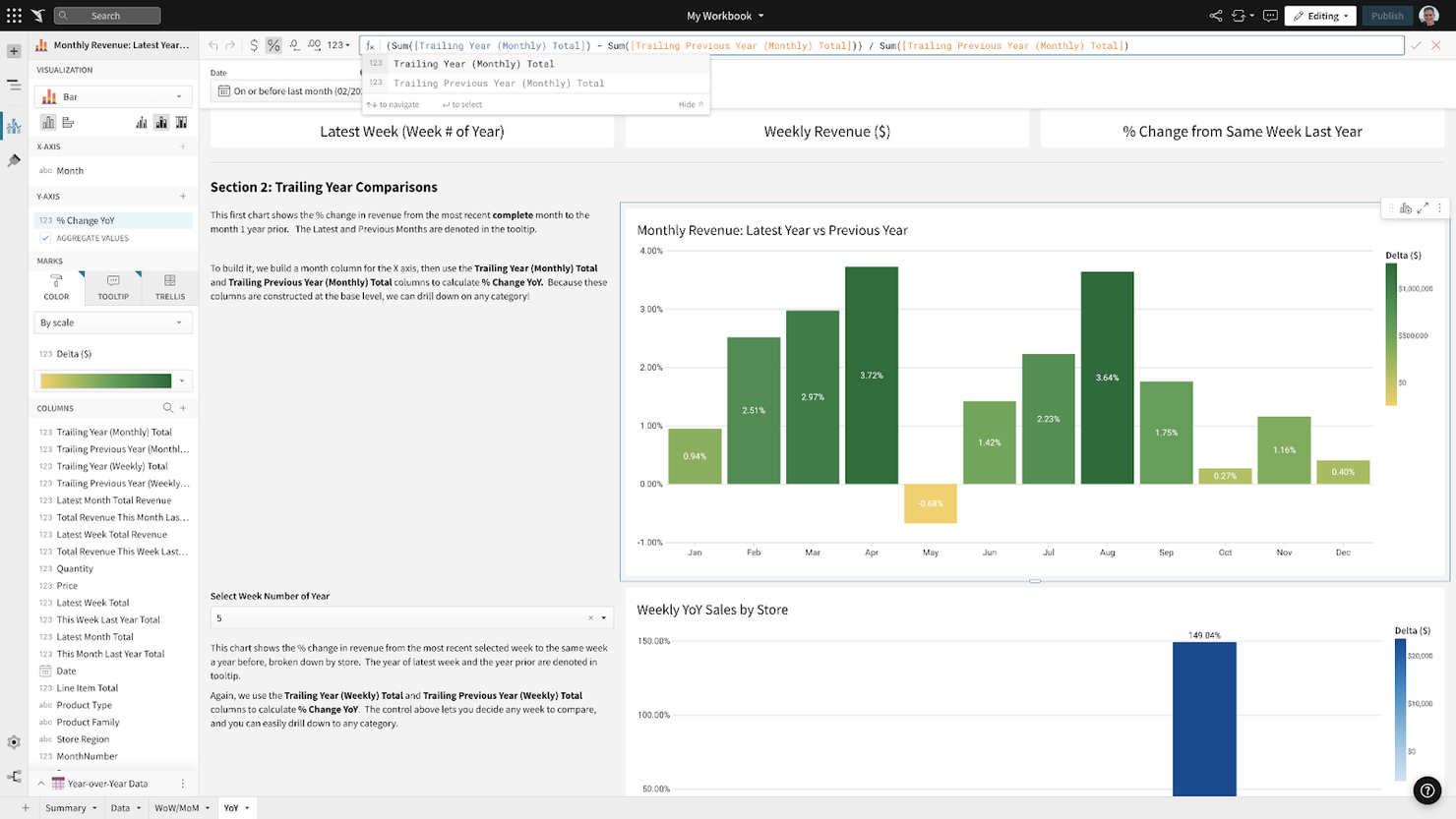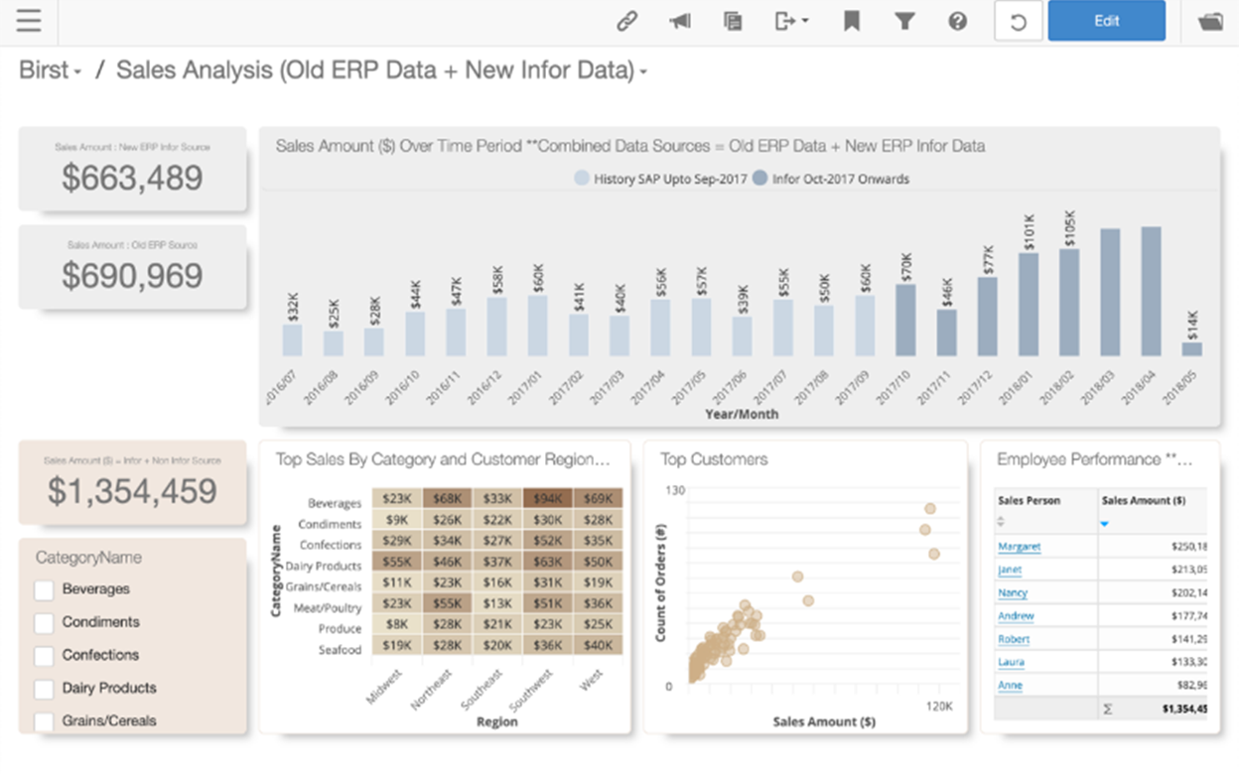Best Cloud BI Tools Shortlist
Here's my pick of the 10 best software from the 21 tools reviewed.
With so many different cloud BI tools available, figuring out which is right for you is tough. You know you want a flexible and efficient way to manage and analyze your business data but need to figure out which tool is best.
I've got you! In this post I'll help make your choice easy, sharing my personal experiences using dozens of different cloud BI software with various teams, with my picks of the best cloud BI tools.
Why Trust Our Software Reviews
Best Cloud BI Tools Summary
This comparison chart summarizes pricing details for my top cloud BI tools selections to help you find the best one for your budget and business needs.
| Tool | Best For | Trial Info | Price | ||
|---|---|---|---|---|---|
| 1 | Best for instant data insights | Free demo available | Pricing upon request | Website | |
| 2 | Best for automating your ETL/ELT | 30-day free trial | From $433/user/month (billed annually) | Website | |
| 3 | Best for empowering your entire organization with data-driven decision-making | 30-day free trial for new users | Pricing upon request | Website | |
| 4 | Best for automating and modernizing your reporting process | Free trial + free demo available | Pricing upon request | Website | |
| 5 | Best for building a BI-focused tech stack with products from the same family | 30-day free trial | From $5,000/month | Website | |
| 6 | Best for cloud BI plans designed for your industry | Free demo available | Pricing upon request | Website | |
| 7 | Best cloud BI tool for enterprise-level deployment | 90-day free trial | From $36/user/month | Website | |
| 8 | Best for creating interactive visual reports | Free trial available | Pricing upon request | Website | |
| 9 | Best for its unique scale and performance with large data sets | Free trial available | Pricing upon request | Website | |
| 10 | Best for delivering industry and role-specific analytics | Free demo available | Pricing upon request | Website |
-

Expedite Commerce
Visit Website -

Prisync
Visit WebsiteThis is an aggregated rating for this tool including ratings from Crozdesk users and ratings from other sites.4.7 -

QuickBooks Online
Visit WebsiteThis is an aggregated rating for this tool including ratings from Crozdesk users and ratings from other sites.4
Best Cloud BI Tools Reviews
Below, I’ve reviewed every tool on my list, providing you with a summary of what it does, standout features and capabilities, and a snapshot of the tool’s internal workings. I’ve also included some pricing information and a few pros and cons that might help you narrow down the right tool for you.
Athenic is an AI-powered cloud business intelligence (BI) platform designed to make analytics accessible for teams across industries like SaaS, consumer packaged goods (CPG), and manufacturing. By combining AI-driven analysis with conversational queries, Athenic helps you transform complex data into actionable insights quickly and efficiently.
Why I Picked Athenic: I picked Athenic because it makes accessing insights fast and intuitive. Instead of waiting for lengthy reports, you can ask questions in natural language and receive real-time answers, complete with visualizations. Its custom AI models are another standout, allowing you to tailor analytics to your organization’s unique goals and terminology. This flexibility means Athenic adapts well across industries and use cases. Additionally, its knowledge graph enhances the depth of analysis, providing highly relevant responses and empowering teams to uncover insights they might otherwise miss.
Athenic Standout Features and Integrations
Standout features include Athenic’s conversational interface for instant insights, its knowledge graph for precise data inquiries, and its agentic deep-research capability, which autonomously explores complex datasets to generate comprehensive reports. The platform also prioritizes security and scalability, making it suitable for startups and enterprises alike.
Integrations include Google Sheets, Slack, MailChimp, Gmail, Trello, ClickUp, Airtable, Salesforce CRM, HubSpot, Monday.com, Notion, Stripe, Asana, Zoho CRM, Google Ads, and more.
Pros and cons
Pros:
- Functions as an AI-powered English-to-SQL translator, enhancing data querying
- Supports product and customer growth planning
- User-friendly interface simplifies data analysis for non-technical users.
Cons:
- Limited features compared to more advanced analytics tools
- Requires internet access for optimal functionality
As a low and no-code analytics platform, Alteryx strives to encourage everyone on your team to engage with data by making reporting and insights fun and unique. With quick results that can deliver breakthroughs every day, Alteryx offers a cloud platform that can help organizations connect, prepare, analyze, scale, and automate.
Why I picked Alteryx: This platform caught my attention because of their ability to help you build and orchestrate robust ETL/ELT data pipelines as any scale. Connect to over 150 data sources, upload them to your destination, transform the data into readable and visually appealing reports, and publish outputs to downstream applications.
Alteryx Standout Features and Integrations
Standout features include Alteryx Designer Cloud to help even non-technical users prep and create stunning reports, Alteryx Auto Insights to uncover and share your data story, and democratized spatial analytics for better decision-making based on geospatial insights.
Integrations include Adobe, AWS, BluePrism, Google Cloud, Microsoft, Snowflake, Tableau, ThoughtSpot, UiPath, and Veritone.
Pros and cons
Pros:
- Accessible, intuitive navigation design
- Robust community provides advice and assistance
- Interface is very easy to use
Cons:
- Requires some training to utilize effectively
- Cost per seat can seem high
Qlik
Best for empowering your entire organization with data-driven decision-making
Qlik Sense is the business analytics tool from Qlik Analytics Platform that allows everyone in your organization to utilize the insights of data analysis to improve their workflow through AI-powered insights and suggestions, as well as AI-accelerated data prep and advanced analytics integration.
Why I picked Qlik Analytics Platform: The reason this solution made my list is because Qlik allows your team to easily communicate their discoveries with everyone who needs to see them through fully interactive and secure offline and online mobility. Business users can get answers and share their work anywhere they happen to be.
Qlik Analytics Platform Standout Features and Integrations
Standout features include data integration through open and standard APIs with customization and extension capabilities, SaaS and multi-cloud architecture to drive scalability for on-premise and private cloud environments, and data management through data warehouse automation.
Integrations include Adobe Analytics, Amazon S3, Coupa, IBM DB2, Jira, Microsoft Azure, MongoDB, Oracle Netsuite, Salesforce Sales Cloud, and SAP CRM. Qlik offers over 100 connectors for data integration.
Pros and cons
Pros:
- Tons of customization capabilities
- Very easy to get started
- Mobile app for more accessibility
Cons:
- Issues with processing big data sets
- Limited data modeling and interactive visualizations
Domo is a system that’s been designed to work for anyone in your organization so nobody has to wait on analyst reports anymore. With their cloud-native data experience, this platform takes traditional business intelligence to the next stage with user-friendly dashboards and apps, as well as providing a centralized space where anyone on your team can access real-time insights.
Why I picked Domo: This platform made my list because it encourages collaboration between teams. Anyone can turn spreadsheets into visual dashboards that update themselves as data changes, schedule reports and updates for key stakeholders, and collaborate on new reports in real-time in shared workspaces.
Domo Standout Features and Integrations
Standout features include self-service data analytics that brings data from every source into one unified view and proactive reporting that changes charts as data changes and notifies you of any updates.
Integrations include Basecamp, DocuSign, Dropbox Business, GitHub, Google Analytics 360, Google Drive, Mailchimp, Microsoft Excel, SurveyMonkey, and Trello.
Pros and cons
Pros:
- Plug-and-play integrations make setup easy
- Features are easy to learn
- Creates polished and professional reports
Cons:
- Can be sluggish with big data sets
- Customer support can be slow to respond
Looker
Best for building a BI-focused tech stack with products from the same family
Looker is a cloud BI tool that’s part of the Google Cloud and uses an intuitive, web-based interface that enables data exploration, report building and sharing, and data-driven decision-making throughout your entire organization. At Looker’s core is data discovery through a simplified coding language called LookerML, which allows data analysts to design and create mini-applications to enhance data exploration.
Why I picked Looker: I chose Looker for this list because the platform has a whole family of additional business intelligence tools that could enhance your tech stack, including Looker Embedded for embedded analytics and applications, Looker Modeler to centralize your most important metrics across the entire company, and Looker Studio to visualize data with configurable tables, charts, and reports.
Looker Standout Features and Integrations
Standout features include databases that allow you to manage and migrate enterprise data more securely, Data Cloud Alliance to provide global businesses with seamless data access, and AI and machine-learning tools that generate instant insights.
Integrations include Asana, Dropbox Business, Google Analytics 360, Google Workspace, HubSpot CRM, Mailchimp, Microsoft Excel, Rippling, Salesforce Sales Cloud, and Slack.
Pros and cons
Pros:
- User-friendly interface and intuitive design
- Great customer support team
- Very easy to learn and use
Cons:
- Instant update isn’t so instant; may require a page refresh
- Large data sets can cause lag time
This business intelligence platform was built to offer smarter planning and actionable insights for better business decisions that unify your strategy for finance and operations. BOARD strives to provide you with the crucial insights you need to gain more visibility across your entire organization — from goal setting to operational execution.
Why I picked BOARD: I chose this platform for my list because of their unique pricing structure. Instead of breaking down the subscription plan right away, they tailor a tool based on your industry or need, including solutions for finance, retail, supply chain, and sales.
BOARD Standout Features and Integrations
Standout features include advanced analytics with machine learning forecasting and simulation, low-code or no-code customization with drag-and-drop editing, and artificial intelligence for scorecard and strategy management.
Integrations include Google Analytics 360, HubSpot CRM, Marketo Engage, Microsoft Excel, Oracle CRM, Salesforce Sales Cloud, SAP HANA Cloud, ServiceMax, SugarCRM, and Veeva CRM.
Pros and cons
Pros:
- Easy to set up and maintain
- Quick handling of high-volume data
- User-friendly interface for an engaging environment
Cons:
- System maintenance is not dynamic
- Reporting designs could be improved
Best cloud BI tool for enterprise-level deployment
The SAP Analytics Cloud is a web-based BI tool that’s built on SAP’s HANA platform that provides it the power to run apps within the cloud and consolidate analytics from many sources into a single, centralized experience. You get real-time data analytics for employees at every level with versatile personalization options and device optimization.
Why I picked SAP Analytics Cloud: This tool caught my eye because of its dashboard-based interface and prioritization of social collaboration. In addition to ad hoc reporting, planning, and forecasting, you can leverage conversational tools to take effective action, share insights, synchronize workflows, and schedule meetings.
SAP Analytics Cloud Standout Features and Integrations
Standout features include data visualization and exploration to inspire audiences, self-service BI modeling and preparation where you set the KPIs, and predictive forecasting with machine learning tools that allow you to anticipate business needs.
Integrations include Google Analytics 360, Google Drive, HubSpot CRM, Meta for Business, Microsoft Office, Qualtrics CoreXM, QuickBooks, Salesforce Sales Cloud, Twitter, and Workato.
Pros and cons
Pros:
- Constantly expanding tool offerings
- Simple and easy user interface
- Allows web-based log-ins
Cons:
- Limited analytics features, like drilling through metrics
- Cannot edit models after creation
As the flagship offering from SAS, this visualization tool offers plenty of features to help you build custom interactive reports. Use the self-service data preparation feature, visual data discovery tools, interactive reporting, and dashboard for simplified analytics capabilities and organizational governance for non-technical users.
Why I picked SAS Visual Analytics: The reason this platform caught my eye was for more than just the reporting and visualization tools. SAS Visual Analytics also boasts a massive library of free tutorials that can teach novices new skills and enhance the skills of more experienced team members. This platform also offers training courses through specialist certification programs.
SAS Visual Analytics Standout Features and Integrations
Standout features include data exploration and analytics with augmented analytics, interactive reporting that’s simple to share and discuss, and conversational AI chatbots through the SAS Conversation Designer.
Integrations include Amazon Aurora, Amazon Redshift, Amazon S3, AWS CloudFormation, Google Cloud, Google Cloud BigQuery, Google Cloud Datastore, Microsoft Azure, OpenShift, and SAS Analytics Pro.
Pros and cons
Pros:
- Works very fast because of parallel computing support
- Easy to use with low-code requirements
- More affordable for large organizations
Cons:
- Has a steep learning curve, which means tutorials are essential
- Less affordable for small businesses
As a business intelligence and analytics software, Sigma Computing is designed to help businesses connect with data warehouses more securely and visualize data by using charts and dashboards with JSON parsing and SQL authoring. This platform offers a familiar interface with spreadsheet-like visuals and functionality.
Why I picked Sigma Computing: This data analytics tool made my list because of its capability with large volumes. With Sigma Computing, you can aggregate and analyze billions of rows in seconds to maximize your CDW investment. With data warehouses and unique cloud-design principles, they deliver scalable performance.
Sigma Computing Standout Features and Integrations
Standout features include data capture and transfer through built-in, code-free connections and self-service data preparations for technical and non-technical users alike.
Integrations include Alooma, Amazon Redshift, Datameer, Fivetran, Gmail, HubSpot CRM, Mailchimp, Matillon, Salesforce Sales Cloud, Slack, and Snowflake.
Pros and cons
Pros:
- Lots of tutorials and guidance videos
- Data continues refreshing while working
- Familiar, spreadsheet-style interface
Cons:
- Learning the platform can take time
- Can be expensive to add on new features
This native cloud BI platform is an analytics tool designed to help your organization understand and optimize complex processes. Infor Birst claims they process data in less time than traditional BI solutions using patented automation and machine learning technology that can help you leverage your insights for smarter business decisions.
Why I picked Infor Birst: I like this platform because they utilize modern data architecture to deliver the support you need to take your analysis anywhere it needs to go. With this flexible approach to managing data, you can enjoy scalable, secure, and adaptable tools that can blend centralized and decentralized data analytics.
Infor Birst Standout Features and Integrations
Standout features include automated data integration to reduce manual tasks for your team, networked BI to support centralized and decentralized team governance, and data sharing to include customers, partners, suppliers, and other stakeholders in your decision-making process.
Integrations include ADP, Bitium, Delphi AI, DocuSign, Marcom Portal, Marketo Engage, Microsoft Excel, SyteLine, SupplyMover, and Tableau. Infor Birst is also part of the new Shopify Global ERP program.
Pros and cons
Pros:
- Enhanced API options to check any data
- Customization is much more user friendly
- Powerful processing and infrastructure capabilities
Cons:
- Limited BQL functionality options
- UI could be a little more intuitive
Other Cloud BI Tool Options
With so many business intelligence tools available, there are a few more options that didn’t make my main list. Check out these runners-up:
- Altair One
For aerospace, engineering, and technology use cases
- Zoho Analytics
Platform with years of experience — operating since 2009
- TIBCO Spotfire
For analyzing both data in motion and data at rest
- Sisense
For infusing data into every part of your workflow
- Salesforce CRM Analytics
For integrating with your Salesforce-driven ecosystem
- Oracle Analytics
Software for data preparation and enrichment
- Thoughtspot
BI software for organizations of any shape and size
- AnswerRocket
BI software for panel data and brand analysis
- Pentaho
For reducing your energy consumption and carbon footprint
- Microsoft Power BI
Platform for empowering your whole team to utilize data
- Tableau Desktop
Tool with a secure self-service environment
Selection Criteria For Cloud BI Tools
When selecting the best cloud BI tools to include in this list, I considered common buyer needs and pain points like data integration challenges and ease of use. I also used the following framework to keep my evaluation structured and fair:
Core Functionality (25% of total score)
To be considered for inclusion in this list, each solution had to fulfill these common use cases:
- Data visualization
- Dashboard creation
- Data integration
- Reporting tools
- Real-time analytics
Additional Standout Features (25% of total score)
To help further narrow down the competition, I also looked for unique features, such as:
- Predictive analytics
- Natural language processing
- Customizable alerts
- AI-driven insights
- Embedded analytics
Usability (10% of total score)
To get a sense of the usability of each system, I considered the following:
- Intuitive interface
- Easy navigation
- Customizable dashboards
- Availability of mobile apps
- Speed of data processing
Onboarding (10% of total score)
To evaluate the onboarding experience for each platform, I considered the following:
- Availability of training videos
- Interactive product tours
- Access to templates
- Webinars for training
- Chatbot assistance
Customer Support (10% of total score)
To assess each software provider’s customer support services, I considered the following:
- 24/7 support availability
- Live chat options
- Access to a knowledge base
- Response time for queries
- Availability of dedicated account managers
Value For Money (10% of total score)
To evaluate the value for money of each platform, I considered the following:
- Pricing transparency
- Scalability of pricing plans
- Comparison to competitors
- Availability of free trials
- Features included in basic plans
Customer Reviews (10% of total score)
To get a sense of overall customer satisfaction, I considered the following when reading customer reviews:
- User satisfaction ratings
- Feedback on ease of use
- Comments on customer support
- Testimonials on performance
- Frequency of updates and improvements
How to Choose Cloud BI Tools
It’s easy to get bogged down in long feature lists and complex pricing structures. To help you stay focused as you work through your unique software selection process, here’s a checklist of factors to keep in mind:
| Factor | What to Consider |
|---|---|
| Scalability | Will the tool grow with your team? Consider if it can handle an increasing volume of data and users without a drop in performance or increased cost. |
| Integrations | Does it connect with your existing systems? Check if it supports APIs for easy data flow between your preferred applications and databases. |
| Customizability | Can you tailor it to fit your needs? Look for options that let you adjust dashboards and reports to match your specific workflows and preferences. |
| Ease of Use | Is it user-friendly? Evaluate the interface design and user feedback to ensure your team can adopt it without extensive training or frustration. |
| Implementation and Onboarding | How long will setup take? Assess the time and resources needed to get up and running, including training materials and support provided by the vendor. |
| Cost | What’s the total cost of ownership? Consider the pricing model, including any hidden fees for upgrades, additional users, or support services. |
| Security Safeguards | How secure is your data? Ensure the tool complies with data protection standards like GDPR and offers encryption and access controls. |
What Are Cloud BI Tools?
Cloud BI (Business Intelligence) tools are software applications that offer business intelligence services such as data analysis, reporting, and visualization, hosted on cloud infrastructure. They enable businesses to integrate data from various sources and provide tools for analyzing and presenting this data in an understandable and actionable format.
These tools are accessible over the internet, eliminating the need for on-premise hardware and software installations.
Features
When selecting cloud BI tools, keep an eye out for the following key features:
- Data visualization: Transforms complex data into easy-to-understand charts and graphs, enabling quicker insights.
- Real-time analytics: Provides up-to-the-minute data analysis, helping users make timely decisions.
- Integration capabilities: Connects seamlessly with other software and databases to ensure smooth data flow.
- Customizable dashboards: Allows users to tailor their interface to better suit their unique needs and preferences.
- Predictive analytics: Uses historical data to forecast future trends, aiding strategic planning.
- Natural language processing: Lets users interact with data using everyday language for easier analysis.
- Mobile access: Enables users to view and analyze data on-the-go from their mobile devices.
- Security safeguards: Protects sensitive data with encryption and compliance with data protection standards.
- Interactive reports: Offers dynamic reporting options that users can manipulate for deeper insights.
- AI-driven insights: Provides automated recommendations and insights to enhance decision-making.
Benefits
Implementing cloud BI tools provides several benefits for your team and your business. Here are a few you can look forward to:
- Improved decision-making: Real-time analytics and predictive insights help your team make informed decisions quickly.
- Increased accessibility: Mobile access and integration capabilities mean your team can access data anytime, anywhere.
- Enhanced collaboration: Interactive reports and customizable dashboards enable team members to work together more effectively.
- Time savings: Automated data processing and AI-driven insights reduce manual workload and speed up analysis.
- Data security: Security safeguards protect your business's sensitive information and ensure compliance with regulations.
- Scalability: These tools can grow with your business, handling more data and users as needed.
- Cost efficiency: With cloud-based solutions, you avoid the cost of maintaining on-premises infrastructure.
Costs and Pricing
Selecting cloud BI tools requires an understanding of the various pricing models and plans available. Costs vary based on features, team size, add-ons, and more. The table below summarizes common plans, their average prices, and typical features included in cloud BI tools solutions:
Plan Comparison Table for Cloud BI Tools
| Plan Type | Average Price | Common Features |
|---|---|---|
| Free Plan | $0 | Basic data visualization, limited dashboards, and restricted data integration. |
| Personal Plan | $10-$30/user/month | Enhanced visualizations, more data connections, and customizable dashboards. |
| Business Plan | $30-$60/user/month | Advanced analytics, real-time data processing, and collaborative features. |
| Enterprise Plan | $60-$120/user/month | Full integration capabilities, predictive analytics, and dedicated support and security features. |
Cloud BI Tools FAQs
Need to learn more about Cloud BI tools before making your decision? Check out the answers to some of the most frequently asked questions.
How secure are cloud BI tools?
Yes, cloud BI tools are generally secure, but it depends on the provider. Look for tools that offer data encryption, regular security audits, and compliance with standards like GDPR. Ask vendors about their security measures and ensure they offer user access controls to protect sensitive data.
Who uses cloud BI tools?
This type of tool is useful in almost every industry, but some verticals have seen its value more quickly than others. You can expect finance, healthcare, and entertainment companies to utilize cloud BI tools to democratize data, scale to meet demand, and get business insights in real time.
Is SaaS a cloud BI tool?
It’s more accurate to say that cloud BI tools are SaaS (Software As A Service) because they provide a software-based service to business owners.
Do cloud BI tools require technical expertise to use?
No, many cloud BI tools are designed to be user-friendly. They often offer intuitive interfaces and drag-and-drop features, making them accessible to non-technical users. However, some advanced features may require technical knowledge. Look for tools with comprehensive tutorials and support to help your team get started.
What kind of support can I expect from cloud BI tool vendors?
Support varies by vendor but typically includes online resources, email support, and sometimes live chat. Higher-tier plans might offer dedicated account managers and phone support. Before purchasing, assess the level of support you’ll need and confirm that the vendor can meet those expectations.
What’s Next?
If you're in the process of researching cloud BI tools, connect with a SoftwareSelect advisor for free recommendations.
You fill out a form and have a quick chat where they get into the specifics of your needs. Then you'll get a shortlist of software to review. They'll even support you through the entire buying process, including price negotiations.






